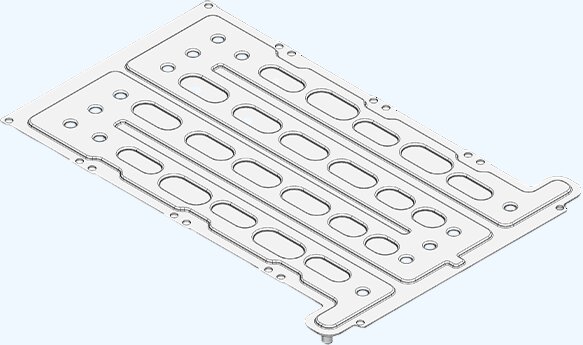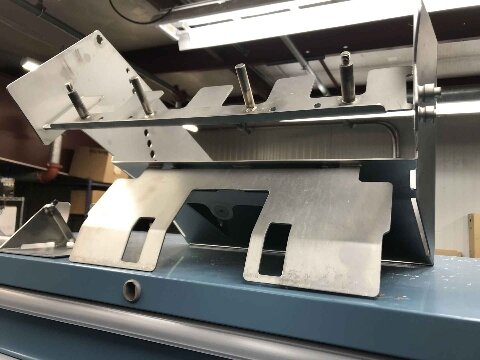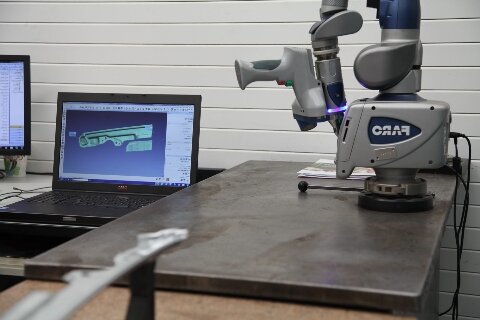오늘날 많은 엔지니어와 디자이너는 복잡하고 세밀한 형상의 부품을 생산 과정에서 정확성을 유지해야 하는 동일한 과제에 직면해 있습니다. 디자인이 점점 더 작아지고 복잡해짐에 따라 기존의 절단 방법으로는 부족한 경우가 많습니다.
레이저 커팅은 이러한 부품 생산에 혁신을 가져왔습니다. 레이저 커팅은 정밀도, 속도, 제어 기능을 결합하여 과거에는 불가능해 보였던 미세한 디테일을 처리할 수 있게 해줍니다. 이 기사에서는 이 기술이 복잡한 형상을 처리하고 정밀도가 중요한 산업에서 정확성을 유지하는 방법을 살펴봅니다.
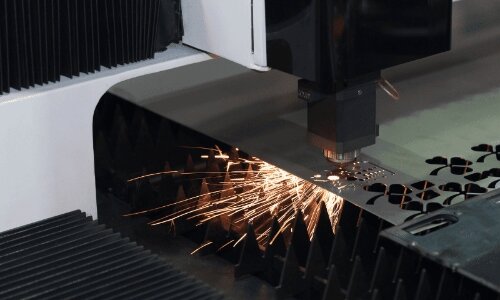
레이저 정밀도 뒤에 숨겨진 과학
레이저의 정밀도는 빔의 좁고 안정적인 초점에서 비롯됩니다. 레이저는 빛을 0.1밀리미터보다 작은 지점에 집중시킬 수 있습니다. 이 작은 점의 에너지는 절단 경로를 따라 금속을 즉시 녹이거나 기화시킬 수 있을 만큼 강합니다. 물리적인 접촉이 없기 때문에 주변의 재료가 구부러지거나 뒤틀리지 않습니다.
이 비접촉식 프로세스는 뛰어난 정확도를 가능하게 합니다. 컴퓨터 제어 시스템이 빔의 출력과 위치를 실시간으로 조정하여 모든 기능이 디지털 설계와 일치하도록 보장합니다. 반사되거나 열에 민감한 금속에서도 수 미크론 이내의 오차가 가능합니다.
열 제어는 또 다른 핵심 요소입니다. 빔의 출력과 절단 속도를 조정하여 열이 좁은 영역에 집중되고 제한되도록 합니다. 따라서 기계식 또는 플라즈마 커팅에서 흔히 발생하는 균열이나 뒤틀림을 방지할 수 있습니다. 최종 절단은 매끄럽고 깨끗하며 일반적으로 마무리 작업이 거의 필요하지 않습니다.
정밀 제어: 파워, 초점, 속도
절단 정확도는 파워, 초점, 속도라는 세 가지 주요 요소를 제어하는 데 달려 있습니다. 작업자는 이러한 설정을 지속적으로 조정하여 복잡한 디자인에서 모든 디테일이 선명하고 일관되게 유지되도록 합니다.
다양한 재료와 두께에 맞게 파워 조절
레이저 출력은 빔이 얼마나 깊고 빠르게 절단되는지를 결정합니다. 얇은 금속 시트는 과도한 용융이나 거친 모서리 생성을 방지하기 위해 더 낮은 출력이 필요합니다. 두꺼운 금속은 완전한 투과를 위해 더 높은 출력이 필요합니다.
금속마다 반응하는 방식이 다릅니다. 스테인리스 스틸은 레이저 에너지의 일부를 반사하기 때문에 더 많은 출력이 필요합니다. 알루미늄은 빠르게 냉각되므로 작업자는 안정적인 용융 영역을 유지하기 위해 출력을 높이거나 절단 속도를 늦추는 경우가 많습니다. 황동과 구리는 더 많은 빛을 반사하므로 과열이나 가장자리의 화상을 방지하기 위해 제어된 파워 펄스를 사용합니다.
파워가 너무 높으면 절단면이 넓어지고 표면이 거칠어집니다. 너무 낮으면 재료가 완전히 절단되지 않을 수 있습니다. 레이저가 가장자리 주변의 열을 최소화하면서 금속을 깨끗하게 분리하는 균형을 찾아야 최상의 결과를 얻을 수 있습니다.
디테일 정확도를 위한 초점 포인트 미세 조정하기
초점 제어는 정밀도에 큰 영향을 미칩니다. 레이저 빔은 에너지가 가장 집중되는 초점에서 가장 좁은 지점에 도달합니다. 이 지점이 표면 바로 위 또는 약간 아래에 위치하면 절단이 선명하고 일관되게 유지됩니다.
얇은 시트의 경우 얕은 초점은 가장자리를 매끄럽게 유지하고 번스루를 방지합니다. 두꺼운 재료의 경우 초점이 더 깊게 이동하여 모든 레이어를 완벽하게 절단합니다.
자동 초점 시스템은 곡면이나 고르지 않은 표면에서 이 균형을 유지하는 데 도움이 됩니다. 실시간으로 초점 깊이를 조정하여 빔이 안정적으로 유지되고 가늘어지는 것을 방지합니다. 이러한 정밀한 제어를 통해 레이저 커팅은 정확한 곡선, 모서리 및 최소한의 특징을 생성할 수 있습니다.
속도와 엣지 품질 간 균형 맞추기
속도 또한 품질에 중요한 역할을 합니다. 기계가 너무 빠르게 움직이면 레이저가 완전히 절단되지 않아 가장자리가 들쭉날쭉하거나 불완전하게 남을 수 있습니다. 너무 느리게 움직이면 열이 축적되어 커프가 넓어지고 금속이 약간 휘어질 수 있습니다.
복잡한 형상의 경우 속도가 느릴수록 더 효과적입니다. 좁은 모서리와 방향이 빠르게 바뀌는 작은 영역에서 레이저를 더 잘 제어할 수 있습니다. 또한 속도가 느리면 아래쪽 가장자리에 거친 부분이 쌓이는 것을 줄일 수 있습니다.
최신 레이저 시스템은 각 피처의 모양과 크기에 따라 자동으로 절단 속도를 조정합니다. 이러한 지능적인 제어는 높은 디테일 품질을 유지하면서 효율적인 생산을 보장합니다. 그 결과 가장 섬세한 패턴에서도 깨끗하고 매끄러운 가장자리와 정밀한 윤곽을 얻을 수 있습니다.
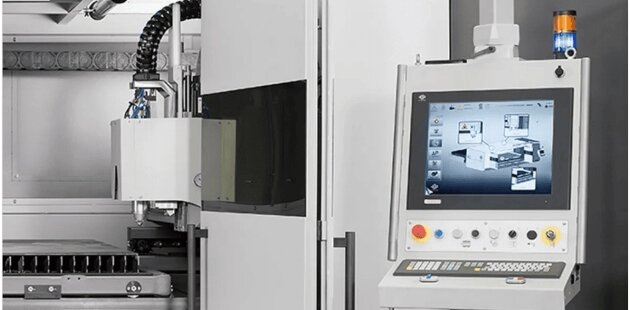
복잡한 레이저 절단에서 CAD 설계의 역할
모든 정밀한 커팅은 잘 준비된 디지털 디자인에서 시작됩니다. 명확한 CAD 계획이 레이저 커터를 안내하여 부드러운 움직임, 정확한 형상, 일관된 결과를 보장합니다.
고품질 벡터 파일 준비하기
레이저 커터는 벡터 경로를 따라 빔이 필요한 곳으로 정확하게 이동합니다. 픽셀이 아닌 좌표를 저장하기 때문에 DXF, DWG, AI와 같은 파일 형식이 가장 적합합니다. 이를 통해 기계는 각 선, 곡선 및 회전에 대한 정확한 지침을 얻을 수 있습니다.
깨끗하고 완전한 경로가 필수적입니다. 열린 선이나 겹치는 모양은 이중 절단, 간격 또는 거친 모서리를 유발할 수 있습니다. 내보내기 전에 디자이너는 모든 윤곽선이 닫히고 단순화되었는지 확인해야 합니다. 여분의 점이나 불필요한 곡선을 제거하면 커터가 더 부드럽게 움직이는 데 도움이 됩니다.
또한 올바른 눈금과 단위를 확인하는 것도 중요합니다. 내보내기 설정이 잘못되면 화면에 올바르게 표시되는 파일도 잘못된 치수를 생성할 수 있습니다. 일관된 레이어 이름을 지정하면 절단이 필요한 부분을 더 쉽게 표시할 수 있습니다, 인그레이빙를 클릭하거나 건너뛸 수 있습니다. 파일을 정리하고 단순하게 유지하면 레이저가 더 효율적이고 정확하게 작동하는 데 도움이 됩니다.
복잡한 모양을 위한 최적화 기술
디자인 후에는 최적화를 통해 파일을 효율적인 재단 계획으로 전환합니다. 한 가지 핵심 방법은 네스팅으로, 한 장에 여러 부품을 촘촘히 배열하여 최대한 많은 재료를 사용하는 것입니다. 네스팅을 잘하면 낭비를 줄이고 생산 시간을 단축할 수 있습니다.
윤곽 보정은 레이저로 제거되는 재료의 얇은 선인 커프를 고려하여 절단 경로를 미세 조정합니다. 이를 통해 부품이 너무 빡빡하거나 너무 느슨하지 않게 정확하게 맞물리게 됩니다.
리드인 및 리드아웃 조정은 빔이 각 절단을 시작하고 끝내는 위치와 방법을 제어하는 데 도움이 됩니다. 파트의 약간 바깥쪽에서 시작하면 번 자국을 방지하고 모서리를 선명하게 유지할 수 있습니다. 세밀하거나 조밀한 패턴의 경우 짧은 각도의 리드 인을 사용하면 컷 사이의 전환이 더 부드러워집니다.
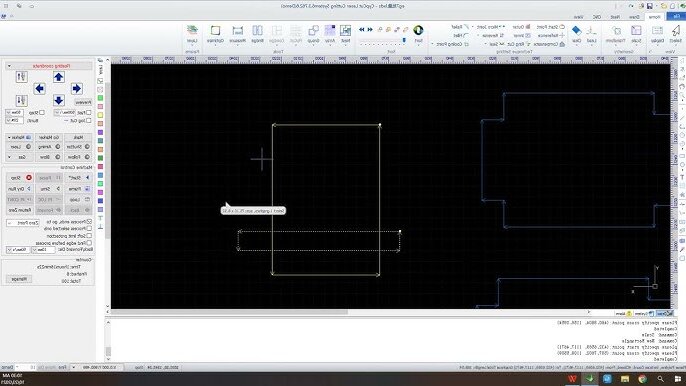
고급 모션 시스템 및 빔 안정화
최신 모션 시스템은 레이저 커터를 부드럽고 정밀하게 움직입니다. 완벽한 정렬, 일관된 속도, 안정적인 출력으로 모든 윤곽, 곡선, 모서리를 추적할 수 있습니다.
부드러운 경로 제어를 위한 고해상도 서보 모터
서보 모터는 절단 정확도를 유지하는 데 중요한 역할을 합니다. 서보 모터는 실시간 피드백을 통해 레이저 헤드를 X축과 Y축을 따라 안내합니다. 고해상도 엔코더는 위치와 속도를 지속적으로 측정하여 시스템이 편차를 즉시 수정할 수 있도록 합니다.
이 지속적인 피드백은 주저함이나 진동 없이 깔끔한 모서리와 부드러운 전환을 만들어냅니다. 복잡한 모양을 절단할 때 서보 제어는 오버슈트를 최소화하고 모든 커브에서 엄격한 허용 오차를 유지합니다. 그 결과 경로 사이에 스텝 마크가 없는 일관된 가장자리 마감이 가능합니다.
전자 제품이나 정밀 기계 부품과 같은 마이크로 커팅 작업에서 서보의 정확도는 모든 작은 구멍과 슬롯이 완벽하게 정렬되도록 보장합니다. 이 모터는 연속적이고 미세한 조정을 통해 동작을 유동적이고 예측 가능하게 유지하여 스테퍼 모터가 따라잡을 수 없는 디테일 수준을 달성합니다.
실시간 빔 모니터링 및 자동 보정
빔 안정화 기능은 작동 중에 레이저 출력과 초점을 일정하게 유지합니다. 센서는 절단하는 동안 에너지 출력, 빔 모양, 정렬을 모니터링합니다. 진동, 열 또는 재료 반사와 같은 사소한 변화라도 감지되면 시스템이 자동으로 광학 장치 또는 빔 강도를 조정하여 균형을 유지합니다.
이 실시간 피드백은 반사되거나 고르지 않은 재료에서도 일관된 절삭 깊이를 유지하는 데 도움이 됩니다. 예를 들어 스테인리스 스틸이나 알루미늄으로 작업할 때 반사는 안정성을 방해할 수 있습니다. 빔 센서는 출력을 즉시 미세 조정하여 거친 모서리나 불완전한 절단을 방지합니다.
일부 고급 시스템은 빔 모니터링과 모션 제어를 하나의 동기화된 루프에 통합합니다. 헤드가 코너에서 속도를 늦추거나 직선에서 속도를 높이면 레이저 출력이 그에 따라 조정됩니다. 이러한 조정을 통해 균일한 커프 폭, 매끄러운 모서리, 정확한 모양을 보장합니다.
복잡한 레이저 커팅을 지원하는 재료
스테인리스 스틸은 레이저 커팅에 가장 적합한 소재 중 하나입니다. 균형 잡힌 밀도와 적당한 반사율 덕분에 작은 버로 부드럽게 녹일 수 있습니다. 그 결과 깨끗하고 일관된 가장자리를 얻을 수 있습니다. 그렇기 때문에 스테인리스 스틸은 정밀도와 가장자리 품질이 중요한 전자 제품, 의료 기기 및 항공 우주 부품에 널리 사용됩니다.
알루미늄은 가볍고 전도성이 높기 때문에 열 제어가 더 어렵습니다. 빠르게 냉각되고 절단 부위에서 열을 빼앗아갈 수 있습니다. 안정적인 커팅을 유지하기 위해 작업자는 종종 출력을 높이거나 속도를 늦춥니다. 알루미늄은 적절한 균형을 통해 섬세한 디테일과 매끄러운 모서리를 만들어 내므로 다음과 같은 작업에 적합합니다. 인클로저, 괄호및 프로토타입 부품.
황동은 강철보다 레이저 에너지를 더 많이 반사하므로 출력 설정을 더 엄격하게 제어해야 합니다. 레이저를 적절히 조정하면 산화를 최소화하면서 밝고 광택이 나는 가장자리를 만들 수 있습니다. 따라서 황동은 장식용 조각, 명판 및 정밀 피팅에 탁월한 선택입니다.
티타늄은 강하고 내구성이 강하며 내열성이 있어 절단이 까다롭습니다. 다행히도 티타늄은 레이저 에너지를 매우 효율적으로 흡수합니다. 올바른 설정으로 레이저를 사용하면 왜곡 없이 선명하고 깔끔하게 절단할 수 있습니다. 티타늄은 내식성과 생체 적합성이 뛰어나 고성능과 완벽한 표면이 모두 필요한 의료 기기 및 항공우주 부품에 이상적입니다.
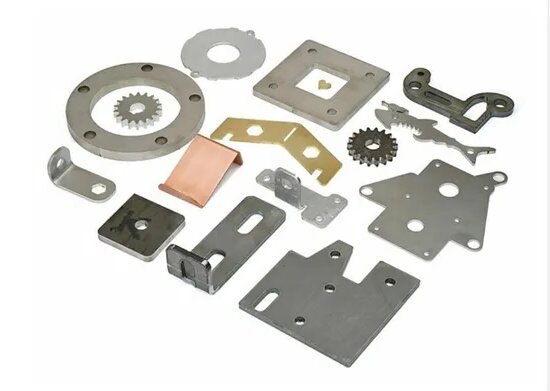
셍겐 엔지니어는 복잡한 설계를 어떻게 처리합니까?
복잡한 아이디어를 완벽한 부품으로 만들려면 전문성과 구조가 필요합니다. 유니티 엔지니어는 모든 단계에서 정밀도와 효율성을 보장하기 위해 세심한 프로세스를 따릅니다.
CAD 입력 및 DFM 확인
먼저 DXF, DWG 또는 AI 파일을 검토합니다. 엔지니어가 올바른 단위, 축척, 레이어를 확인한 다음 모든 경로가 닫혀 있고 피처가 최소 크기 요구 사항을 충족하는지 확인합니다. 잠재적인 문제가 발견되면 즉시 지적하고 신속하고 실용적인 해결책을 제안합니다.
소재 및 두께 검토
다음으로, 소재 등급과 두께를 지정된 공차 및 표면 마감 요구 사항에 맞게 조정합니다. 또한 시트 평탄도, 그레인 방향 및 다음과 같은 후속 단계도 고려합니다. 굽힘 또는 용접를 클릭하여 모든 것이 올바르게 맞도록 합니다.
기계 및 보조 가스 선택
부품의 크기와 형상에 가장 적합한 레이저 장비를 선택합니다. 질소는 깨끗하고 산화물 없는 가장자리가 필요할 때 사용되며, 산소는 두꺼운 강철을 더 빠르게 절단할 수 있습니다. 당사의 목표는 항상 속도와 표면 품질 사이의 균형을 맞추는 것입니다.
경로 전략 및 중첩
부품을 효율적으로 중첩하여 재료를 절약하고 절단 주문을 신중하게 계획합니다. 열에 민감한 피처를 먼저 절단하고 리드인, 마이크로 탭 또는 공통 라인 절단을 추가하여 낭비를 줄이고 가장자리 마감을 개선합니다.
매개변수 최적화
각 재료와 두께에 맞게 전력, 속도, 펄스 주파수, 초점 오프셋, 가스 압력을 미세 조정합니다. 이상적인 설정을 찾으면 이를 기록하여 안정적이고 반복 가능한 생산을 보장합니다.
테스트 쿠폰 및 첫 번째 기사
대량 생산 전에 작은 테스트 쿠폰을 절단하여 커프 폭, 테이퍼, 버 및 열 영향을 받는 영역을 확인합니다. 모든 치수와 표면 디테일이 도면과 정확하게 일치할 때까지 지속적으로 조정합니다.
복잡한 디자인에 생명을 불어넣을 준비가 되셨나요? CAD 파일 또는 도면을 보내주세요.. 저희 엔지니어가 무료로 검토하고 설계 최적화를 제안하며 프로젝트를 시작할 수 있도록 빠르고 정확한 견적을 제공합니다.
안녕하세요, 저는 케빈 리입니다

지난 10년 동안 저는 다양한 형태의 판금 제작에 몰두해 왔으며 다양한 워크숍에서 얻은 경험에서 얻은 멋진 통찰력을 이곳에서 공유했습니다.
연락하세요

케빈 리
저는 레이저 절단, 굽힘, 용접 및 표면 처리 기술을 전문으로 하는 판금 제조 분야에서 10년 이상의 전문 경험을 갖고 있습니다. Shengen의 기술 이사로서 저는 복잡한 제조 문제를 해결하고 각 프로젝트에서 혁신과 품질을 주도하는 데 최선을 다하고 있습니다.

